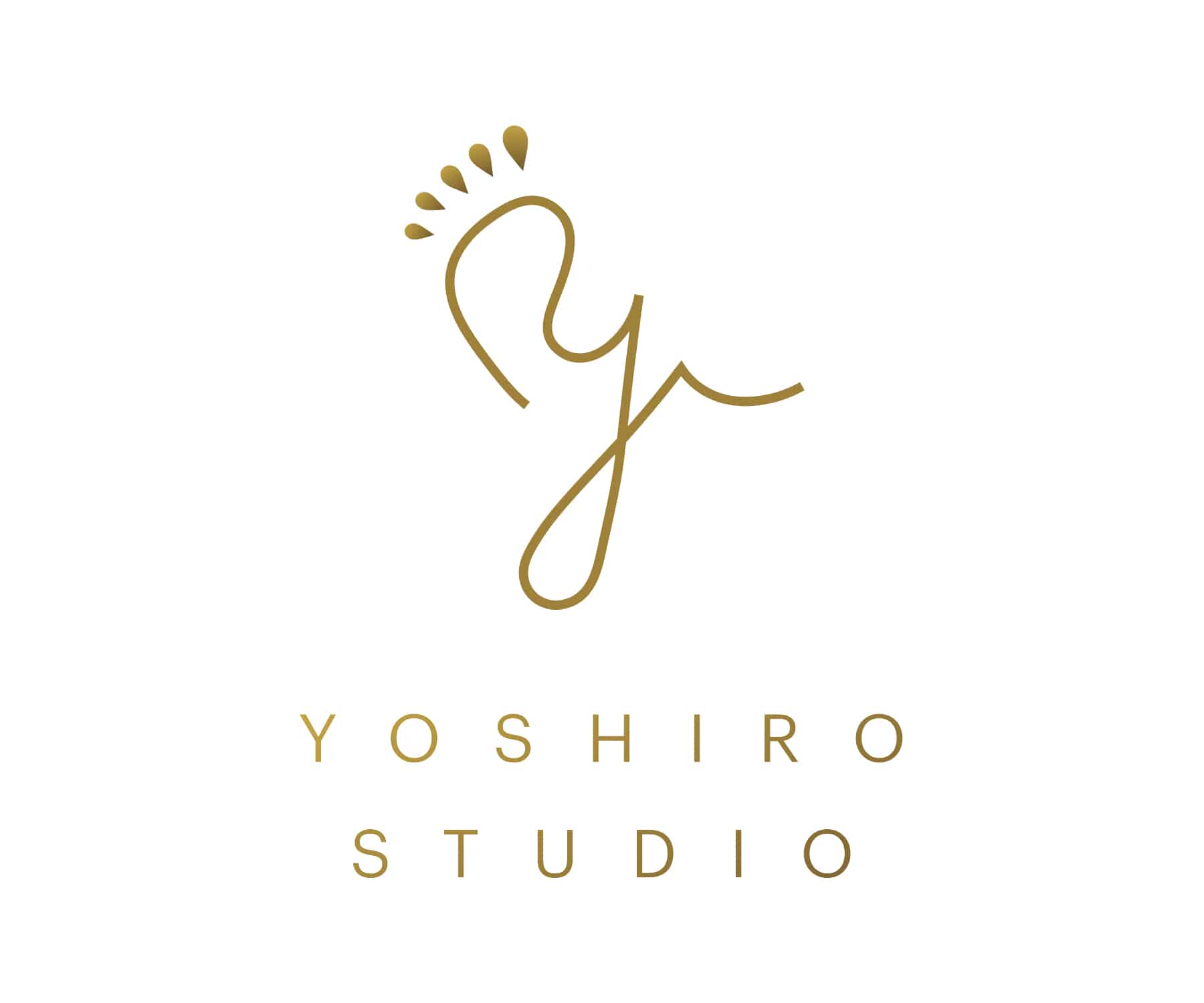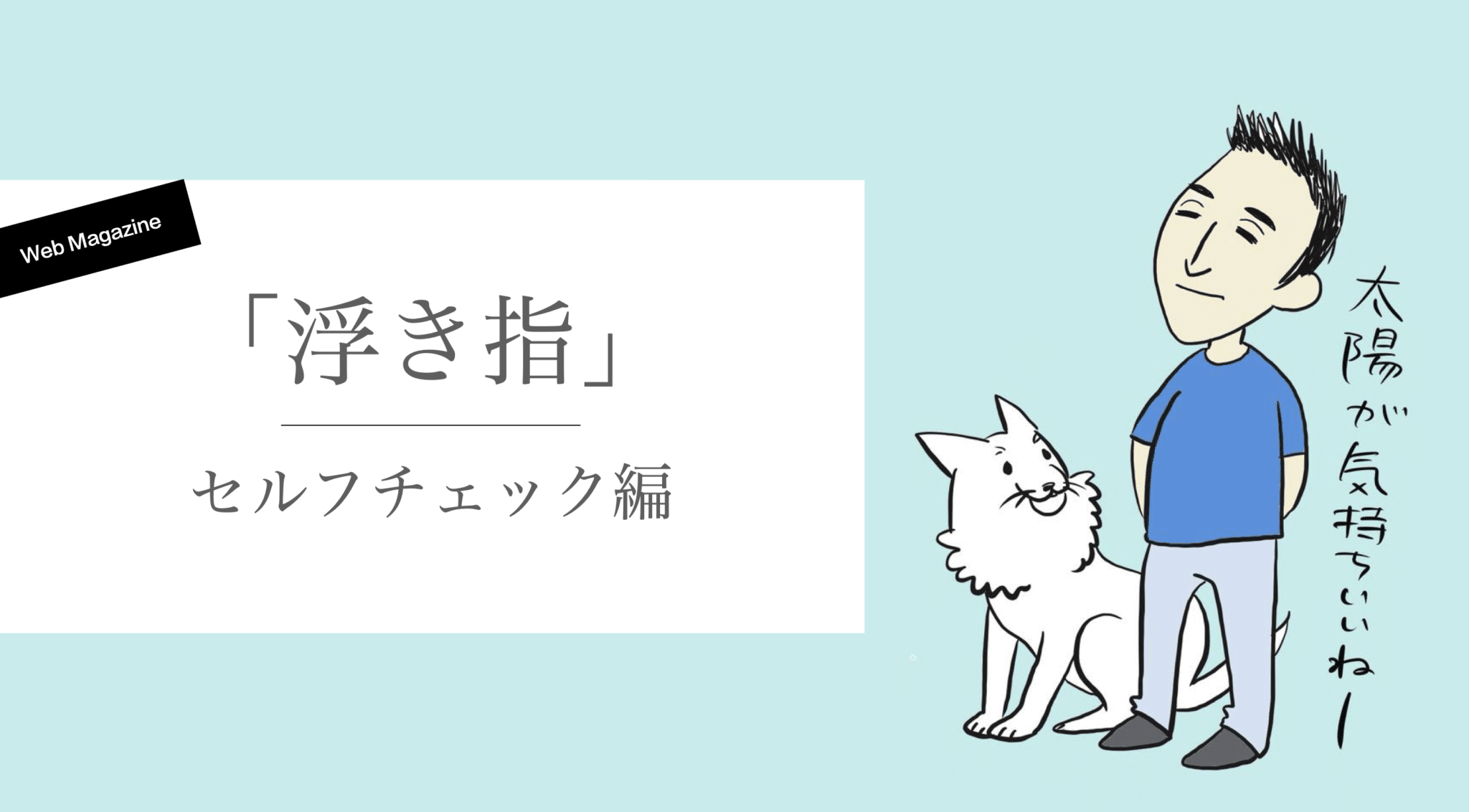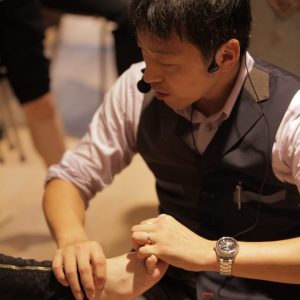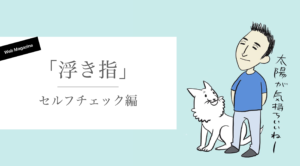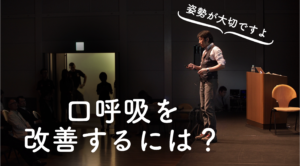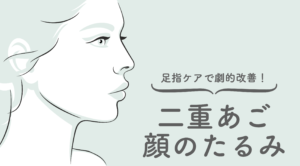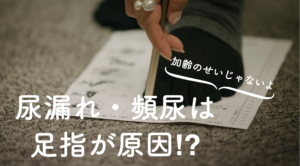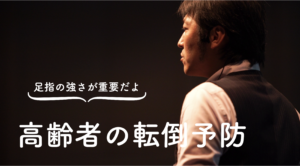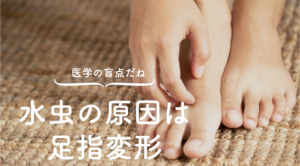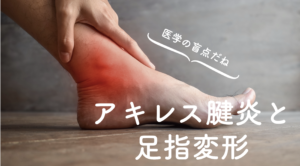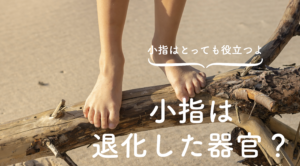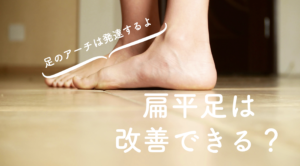Commentary by a toe doctor

YOSHIRO YUASA
Keiro Yuasa
Dr. Toe, Director of Toe Research Institute, President of Japanese Society of Functional Foot and Toe Therapy, and developer of Halmek shoes. Former director, vice president, and medical director of General Hospital. He specializes in exercise physiology and anatomy. He is also a foot and shoe specialist and a leading expert in postural occlusion therapy. He has cured various orthopedic diseases (over 70,000 people) with toe therapy alone.
Self-check method and diagnosis of floating toe
When we walk, our toes are in contact with the ground for approximately 75% hours of the day. With the entire sole installed on the ground, the load on the foot is evenly distributed over the entire sole, stabilizing all the joints in the body.
If one of your toes is floating, you may not know it at first. However, the balance of the foot is slightly off, making it slightly more difficult to walk or run. It is important to regularly check the condition of your toes, as it can lead to more serious toe deformities and systemic problems.
How to do a self-check for floating thumb (ukiyofuji)
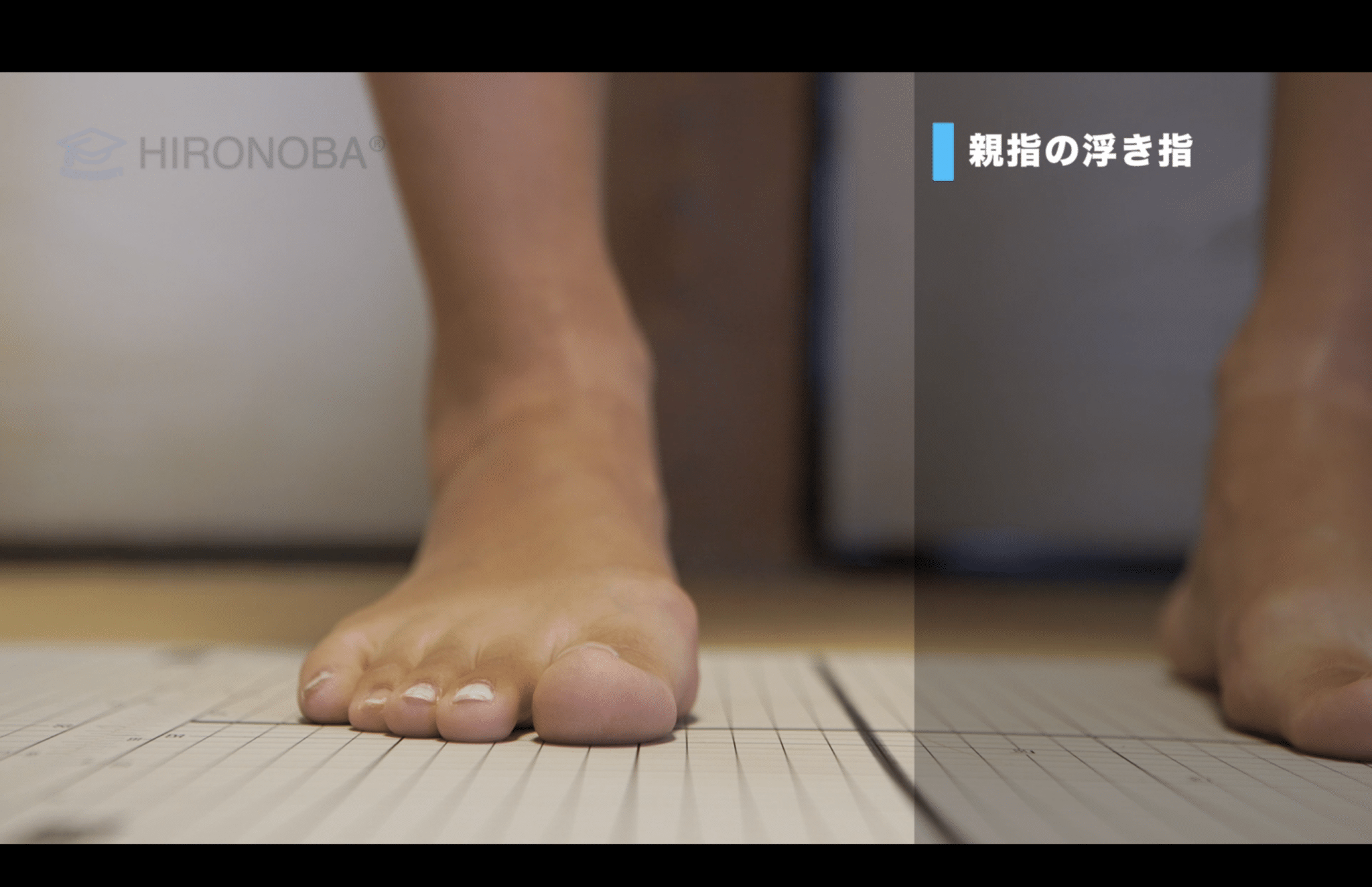
Stand with both legs spread apart. It is easier to observe by taking a picture from directly in front of you.
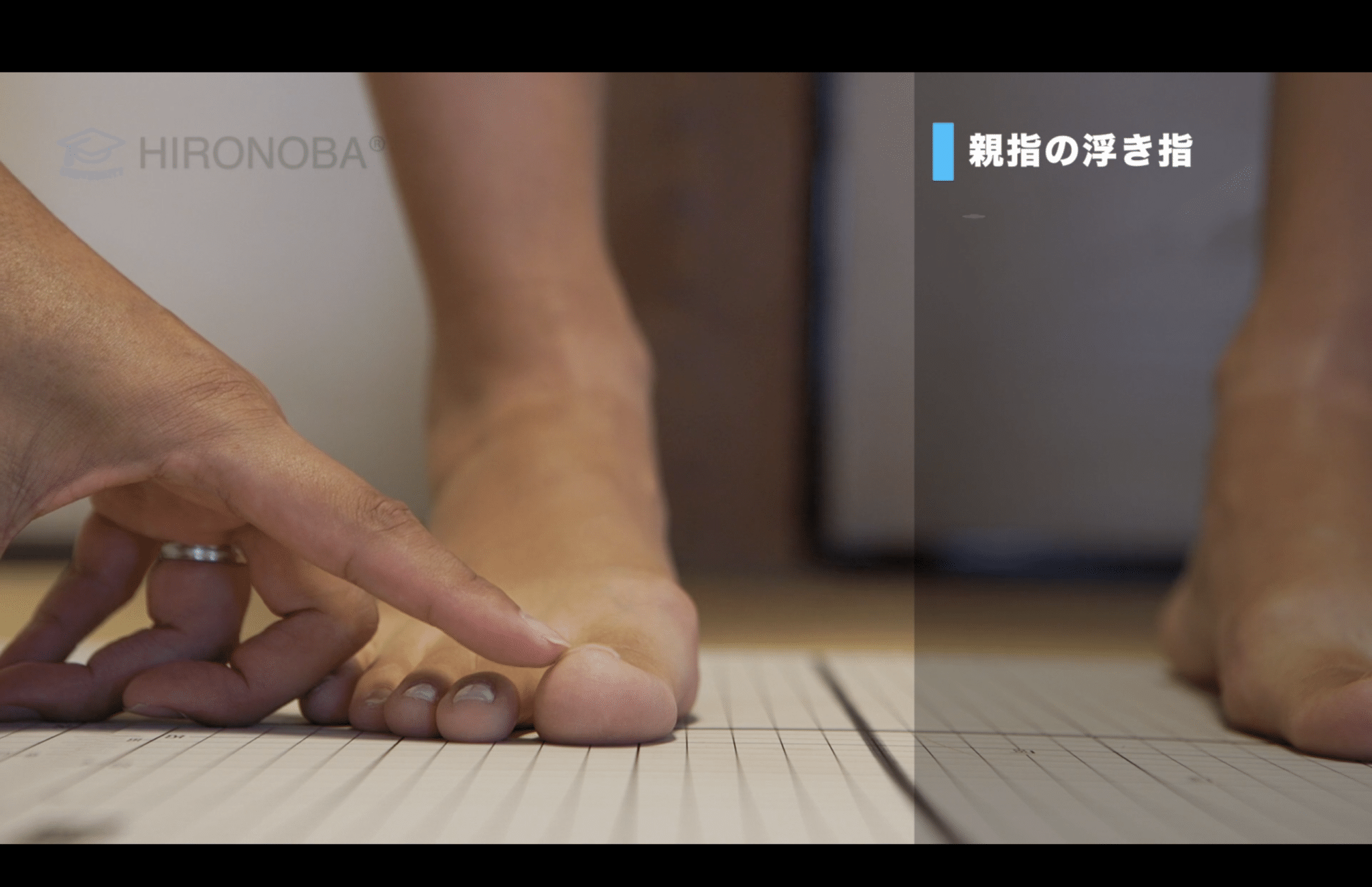
First, let's look at the thumb nail. It is not visible at all compared to the other toenails. This is called a "floating toe.
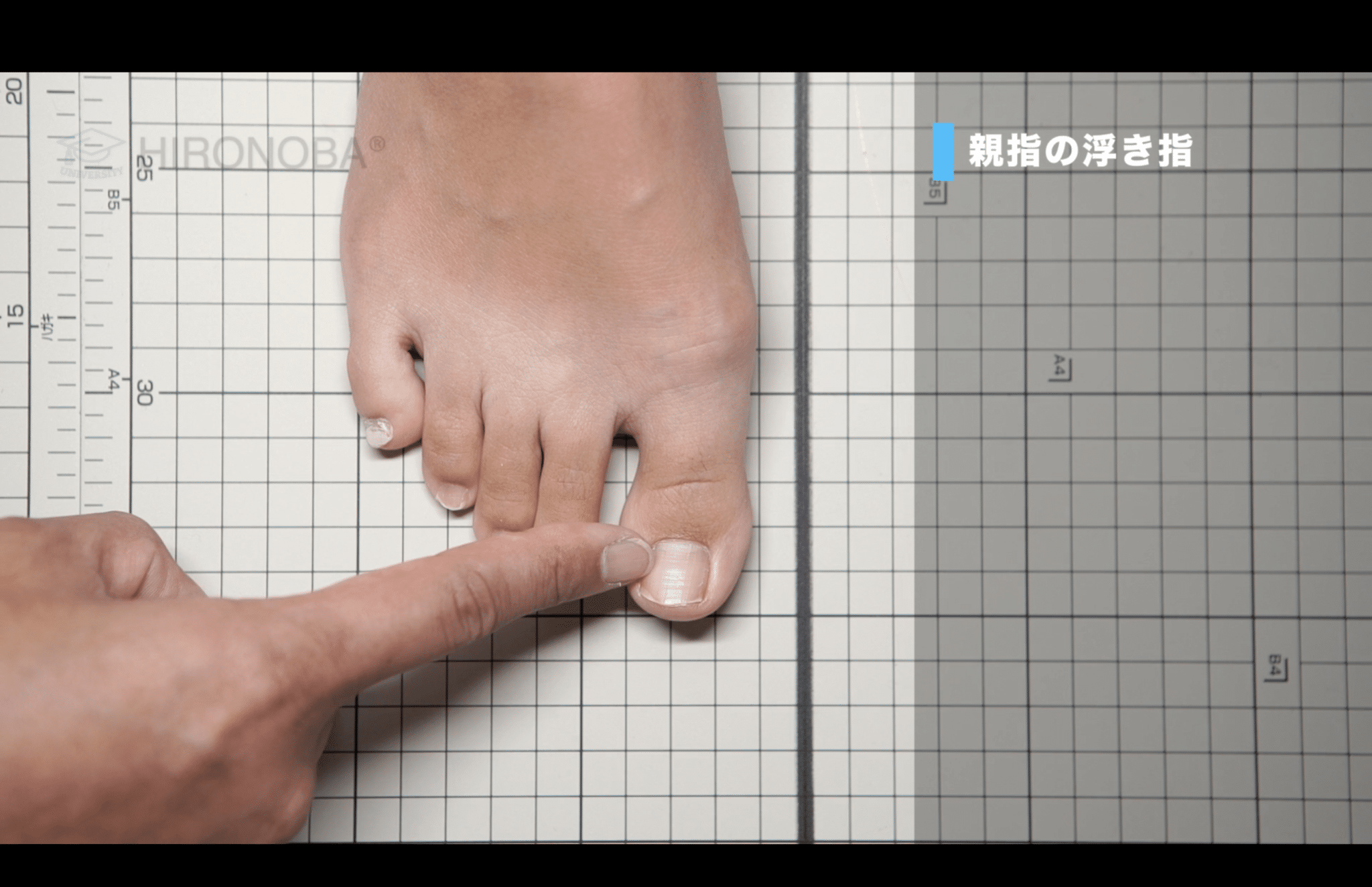
Next, observe the thumb from above.
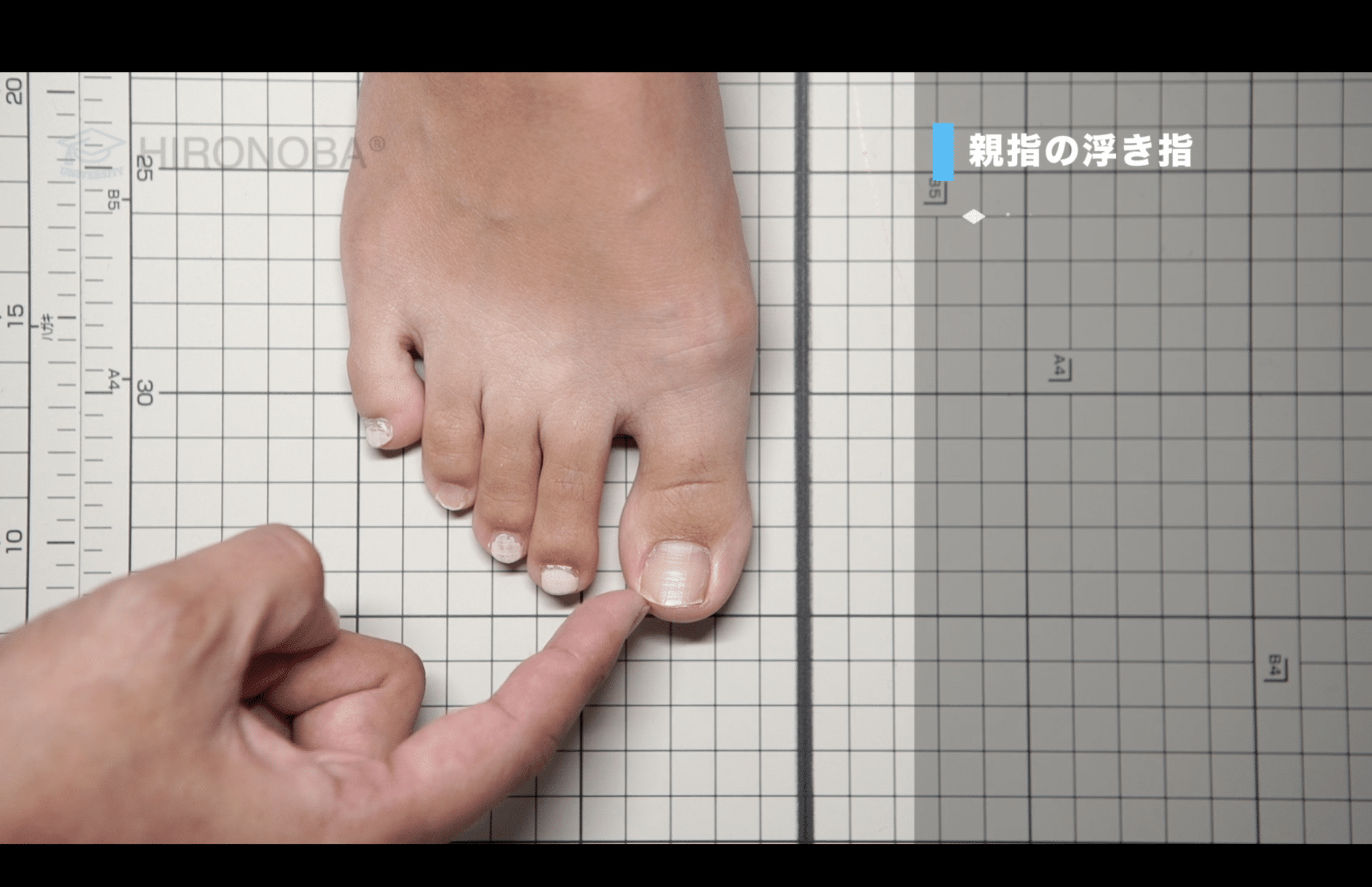
Ideally, the nails should be extended until they cover the skin of the thumb when viewed from above.However, if the nails are cut too far, it is easy to get "floating thumb".
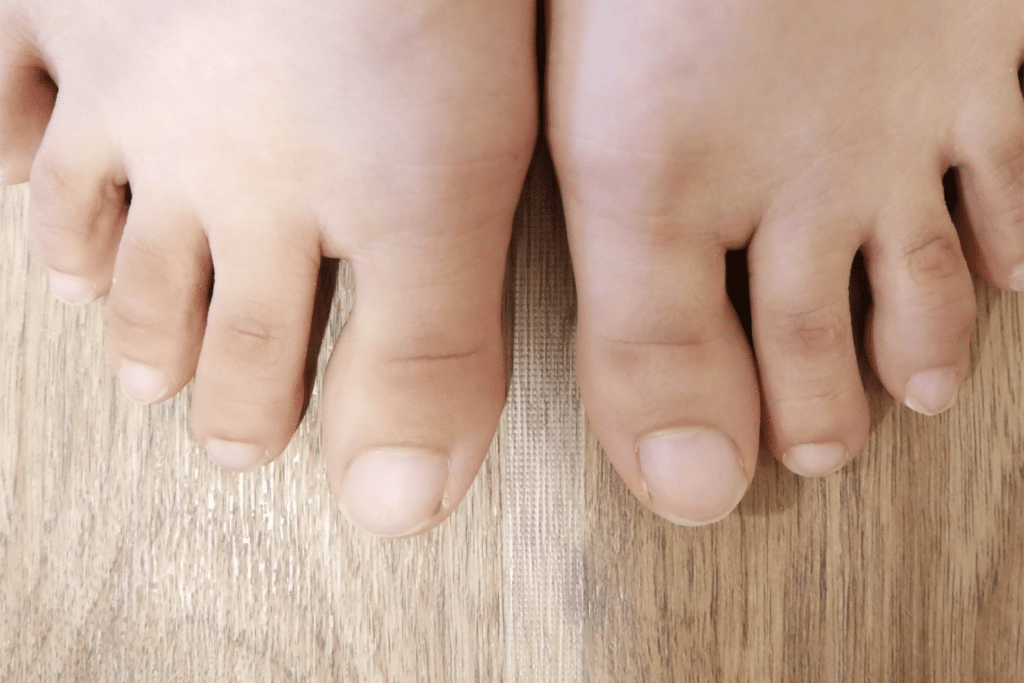
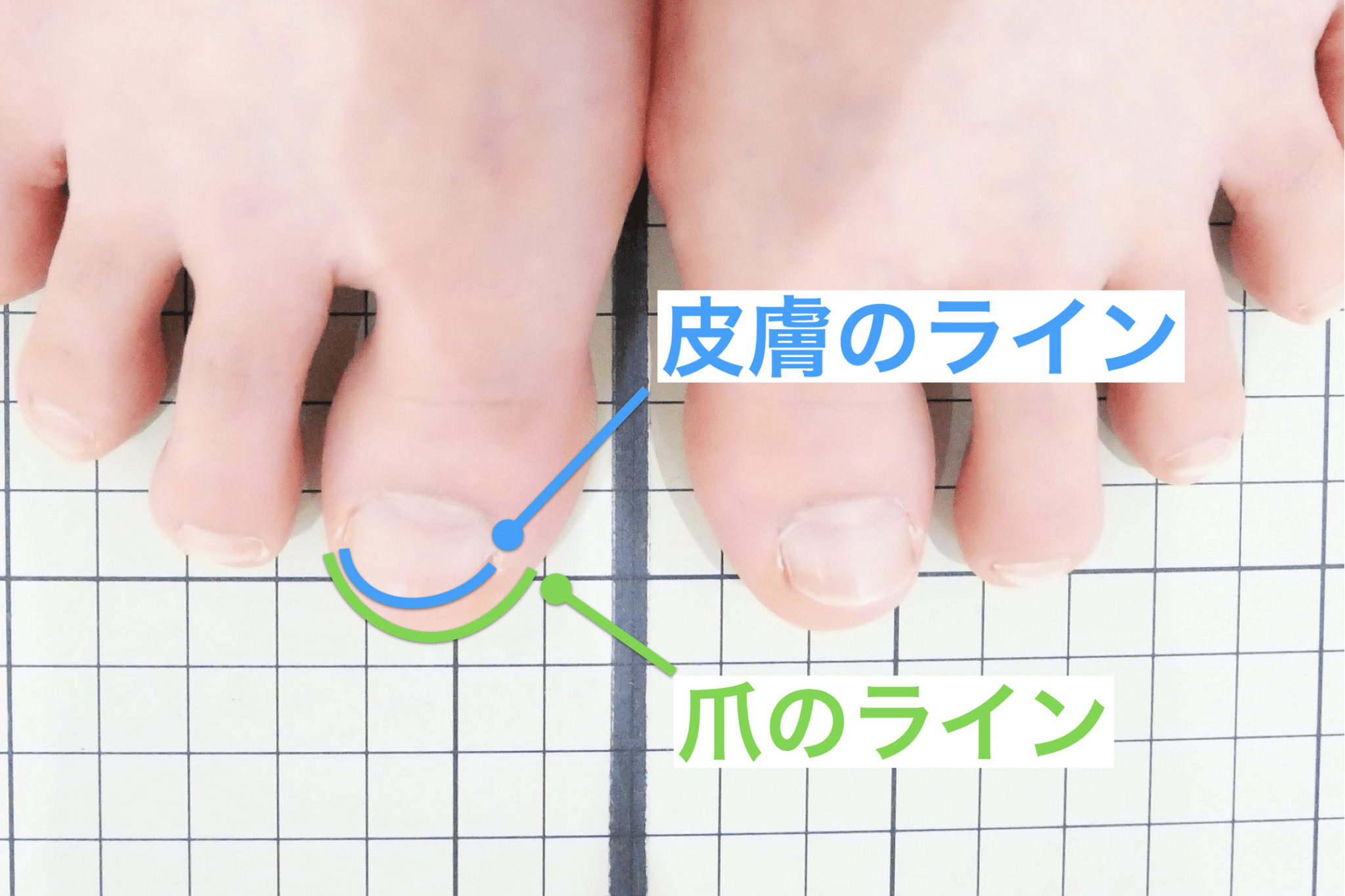
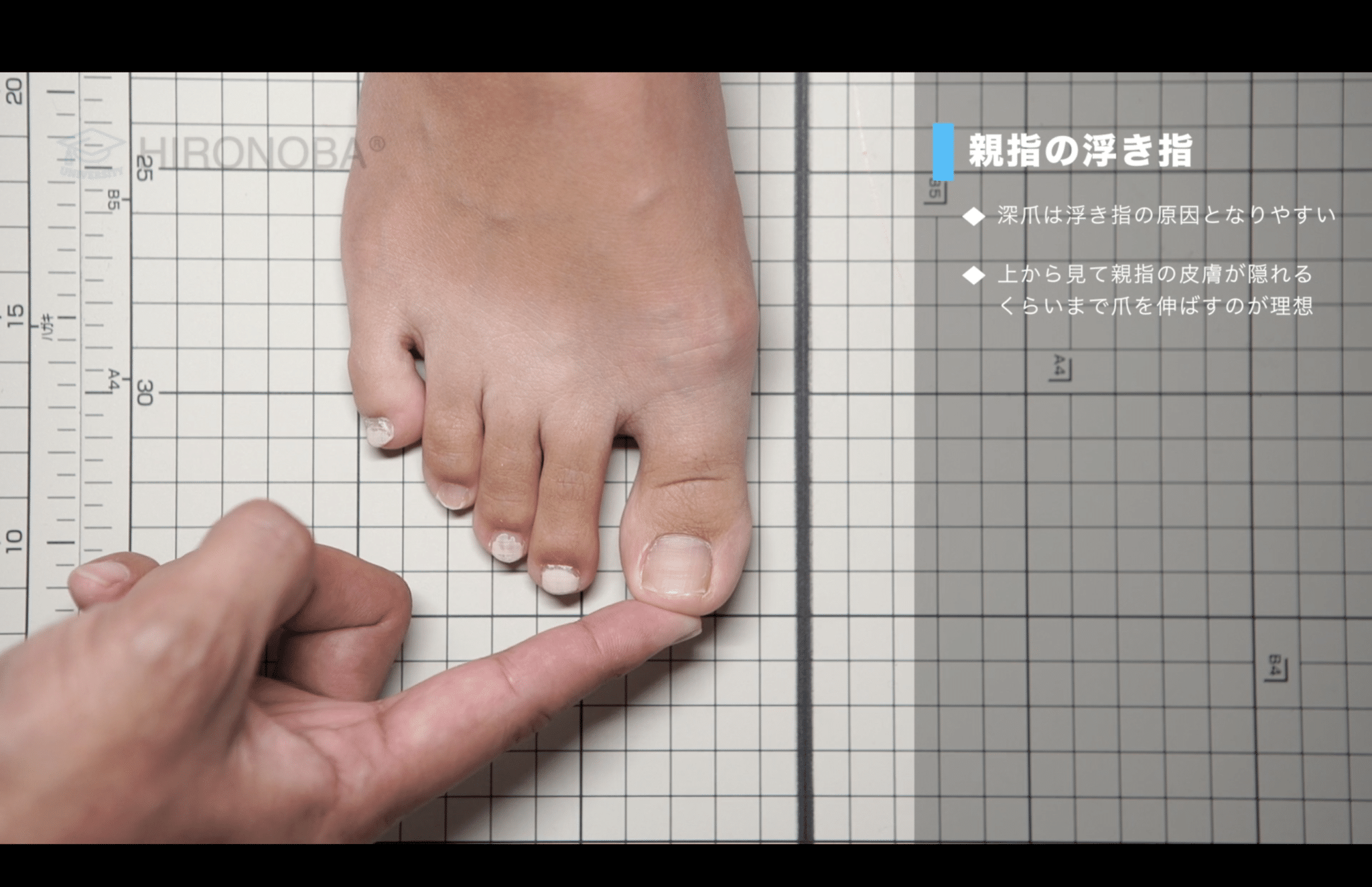
Nails are part of the skin, so the shorter the nails, the less force you have to press the ground with your thumbs.Therefore, if the nails are too deep, the thumb floats, resulting in a "floating finger".
It is said that the thumb supports more than 70% of the body's weight. Therefore, if the nails of the thumb are cut excessively and the thumb becomes "floating," it is difficult for the body weight to be placed in front of the thumb, which leads to a heel center of gravity and posture problems.
Other methods of cell checks for floating fingers
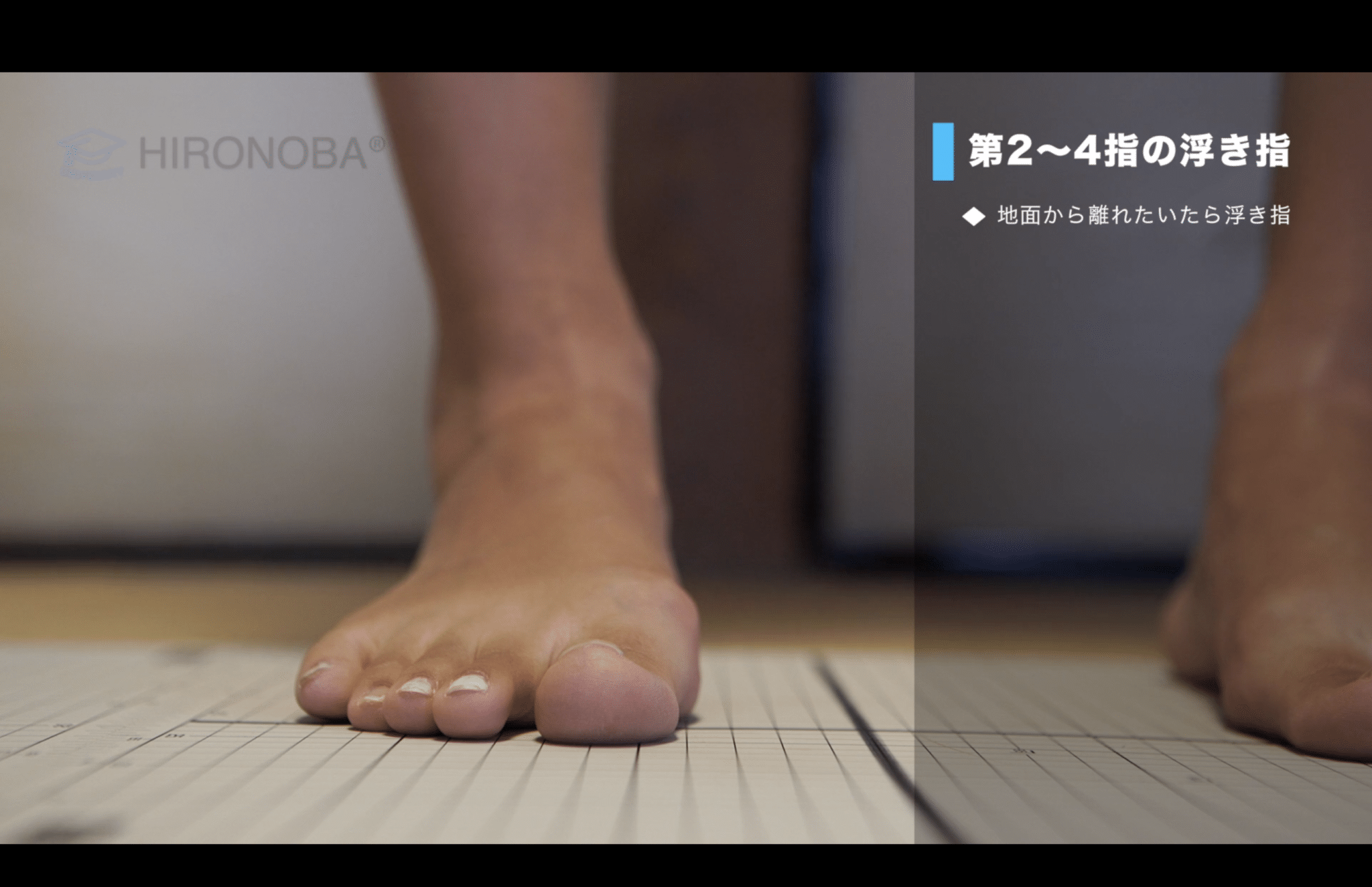
If the toe is off the ground when viewed straight on, it is considered a "floating toe".
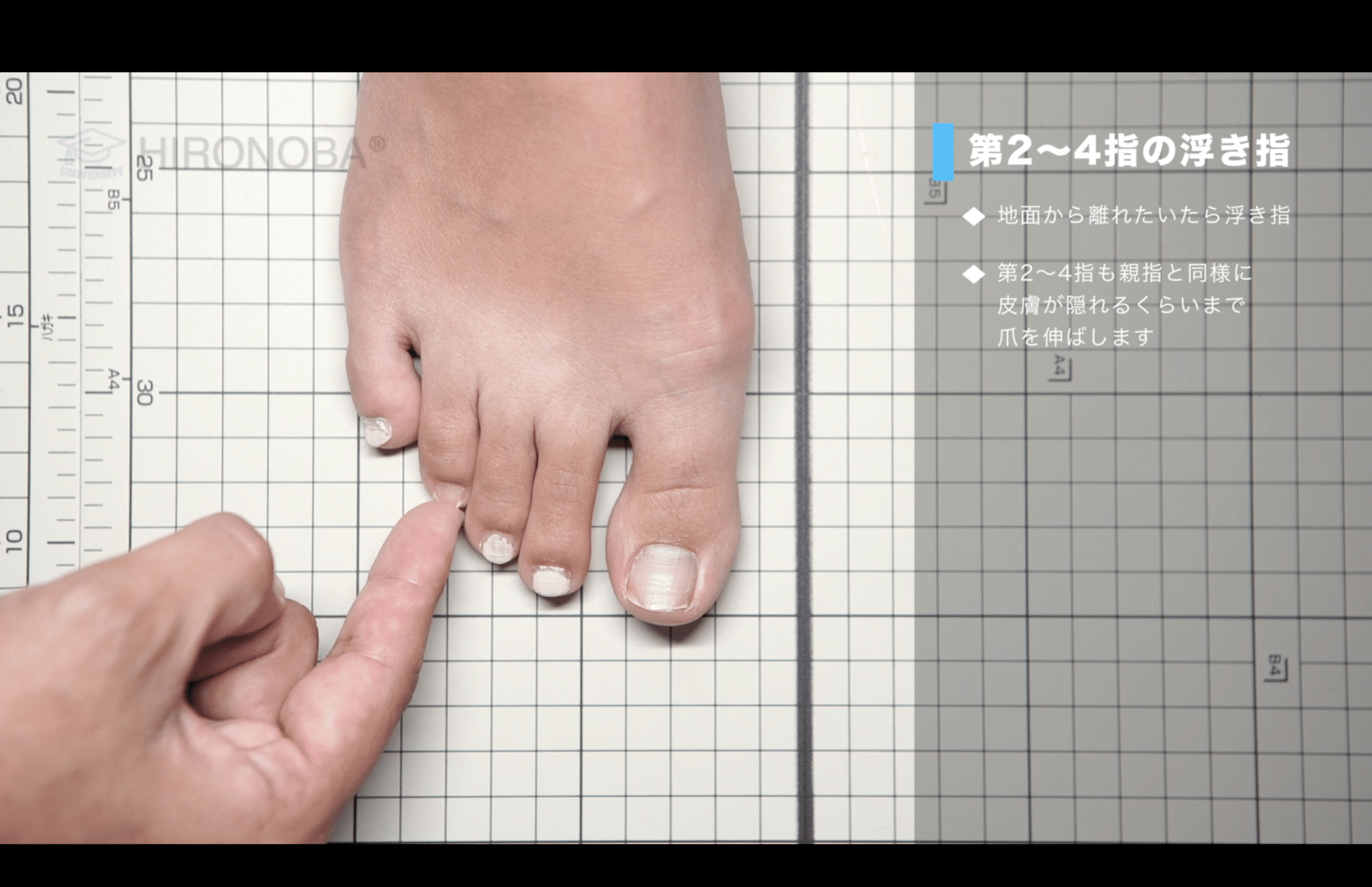
Ideally, the second, third, fourth, and fifth toe nails should be cut the same way as the thumb, extending the toe until the skin at the tip of the toe is slightly covered. Be careful not to cut the nails too long, as this can lead to "floating toes".
Self-check with paper test
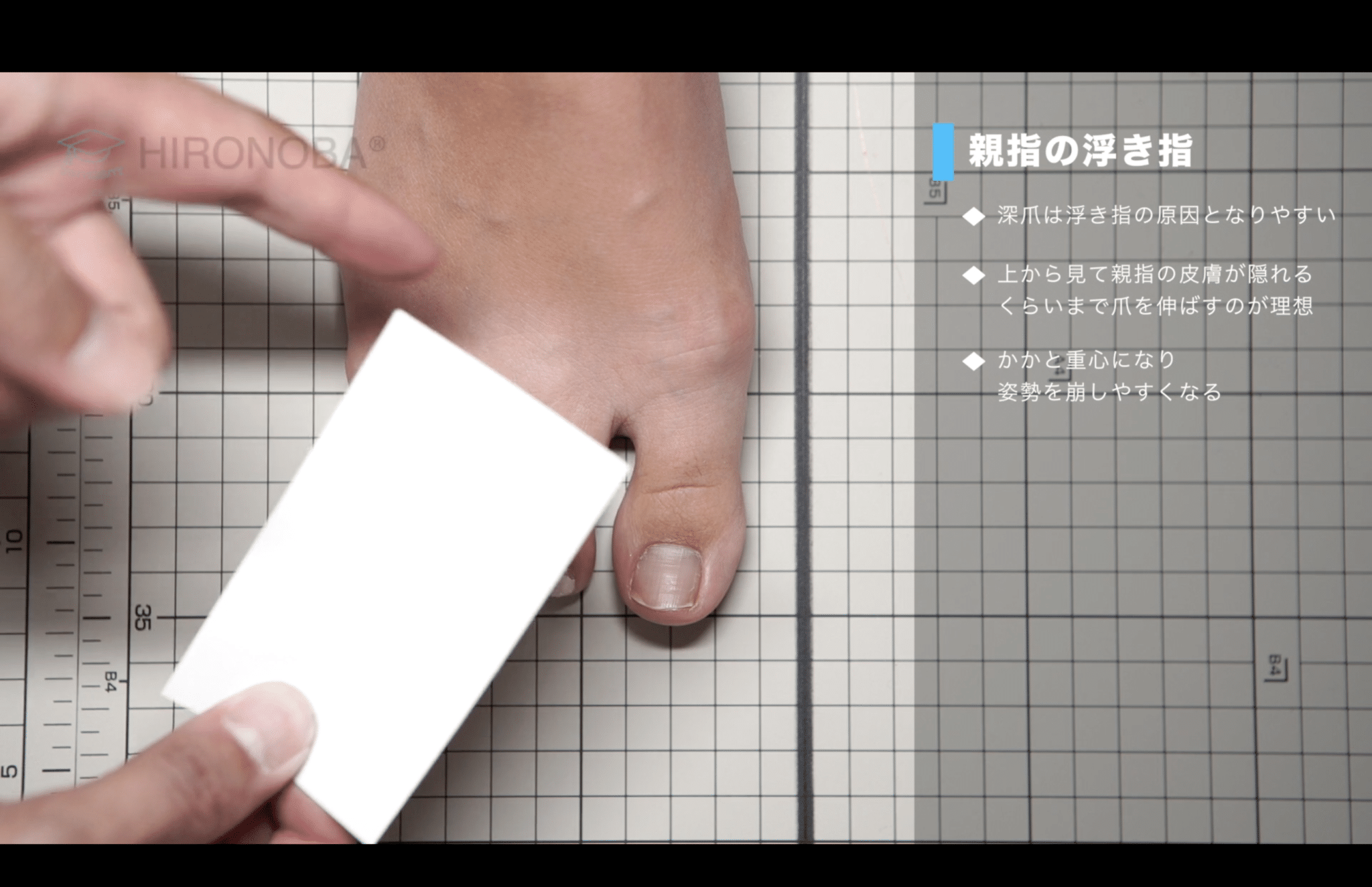
Prepare a business card or slightly thicker paper.
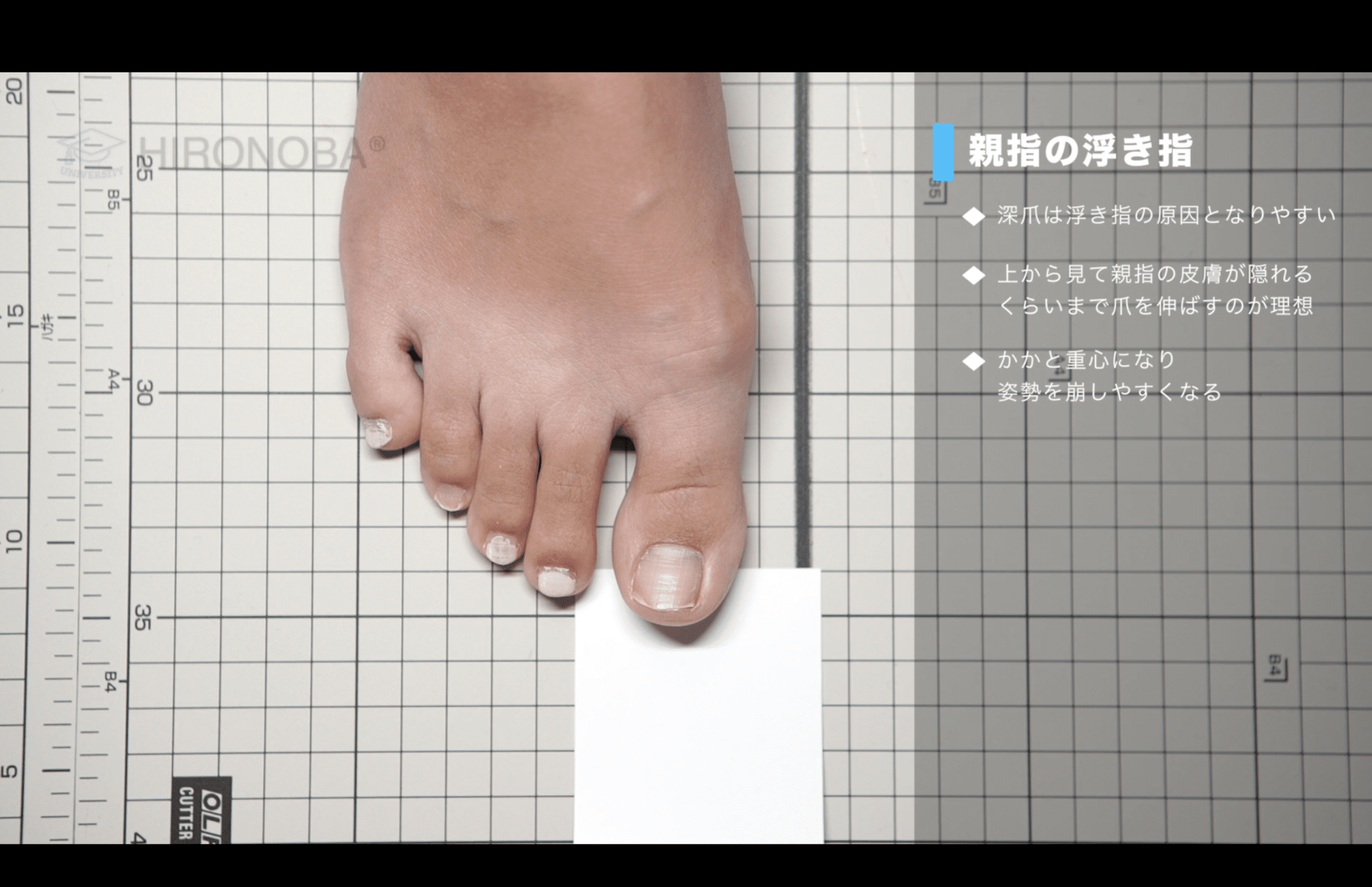
The paper is placed under the thumb.
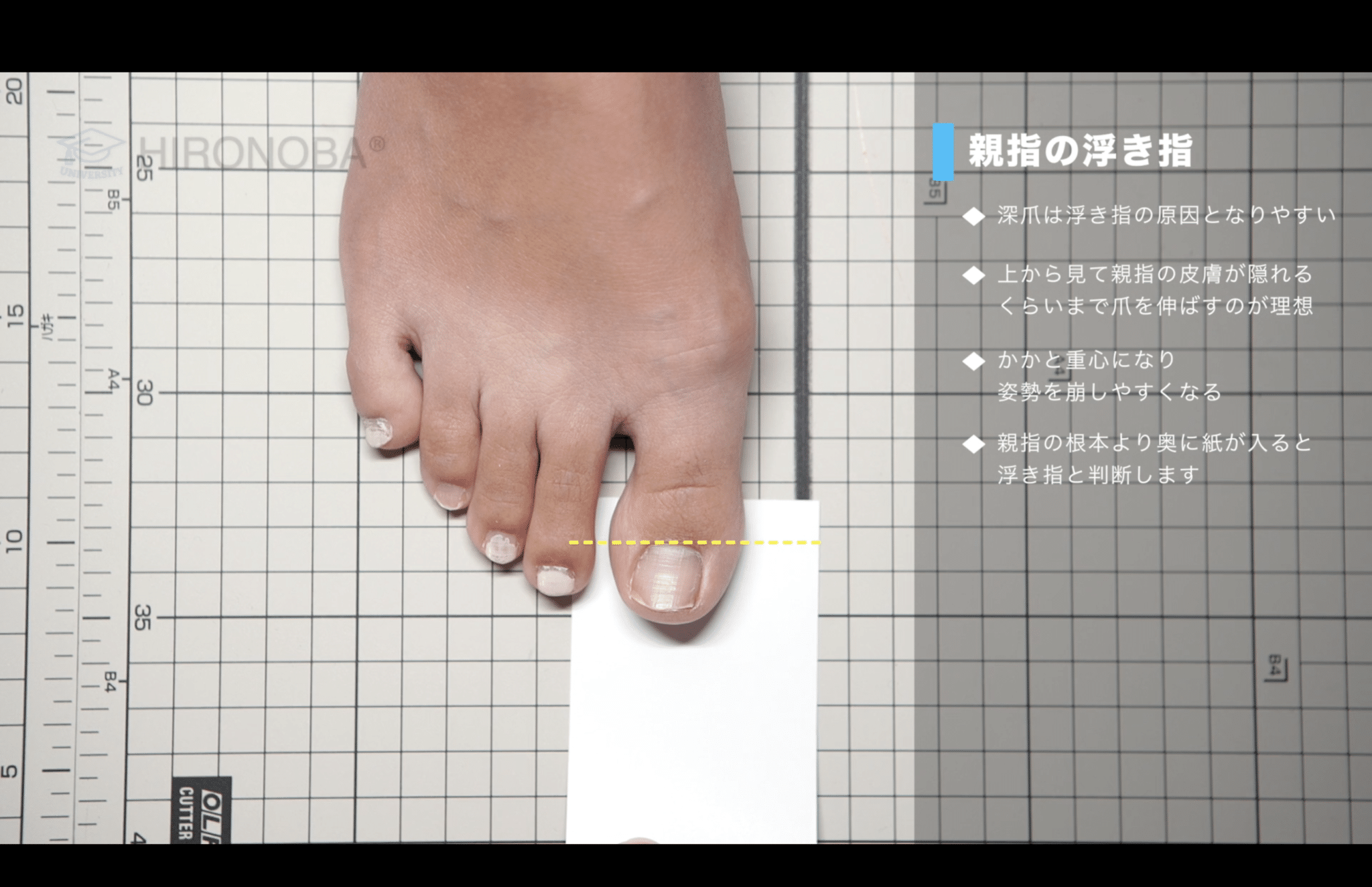
If the paper goes deeper than the base of the thumb (the base of the thumb nail), it is considered a "floating finger".
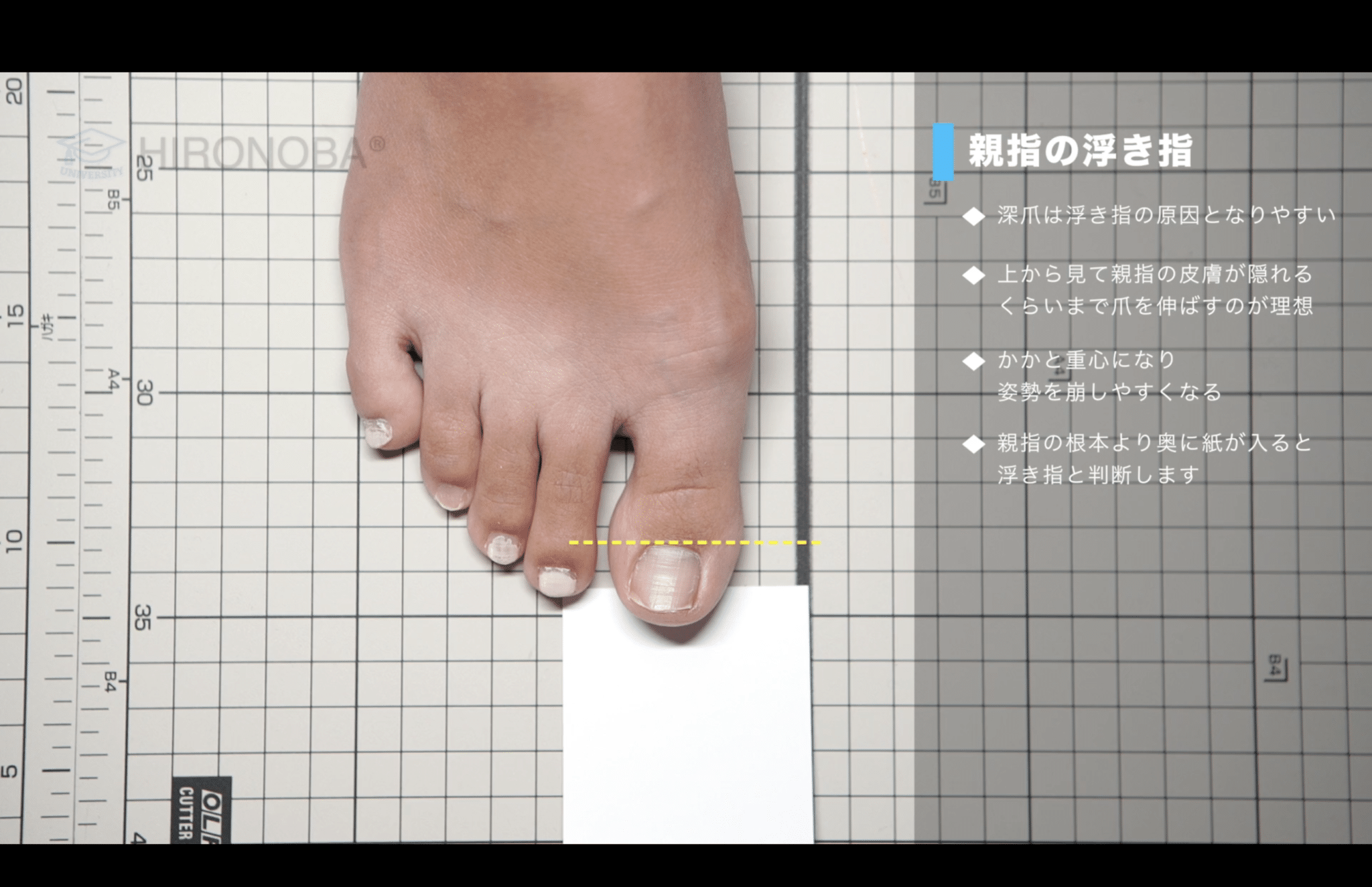
Normally (in the case of non-floating fingers), the inserted paper stops just before the base of the thumbnail.
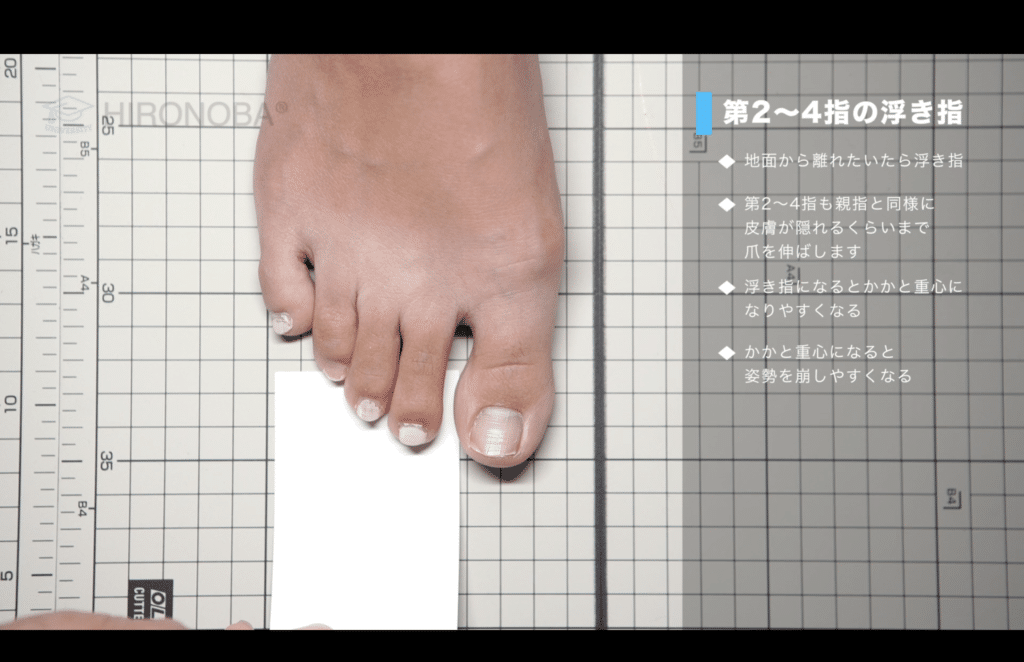
Let's check the second, third, fourth, and fifth fingers by inserting paper in the same way. Normally, the paper stops just before the base of the nail (if it is not a floating finger), but if the paper goes deeper than the base of the nail, it is considered a "floating finger.
What is bad about having a floating finger?
What is wrong with a floating toe (ukiyoobi)? The 2nd, 3rd, and 4th toes keep the foot from tilting forward.It acts like a "stopper."The more you bend over, the more likely you are to trip and fall. Therefore, if the flexion finger becomes severe, the forward stopper is lost, and the person may trip and fall easily. This is the same as a bent finger.
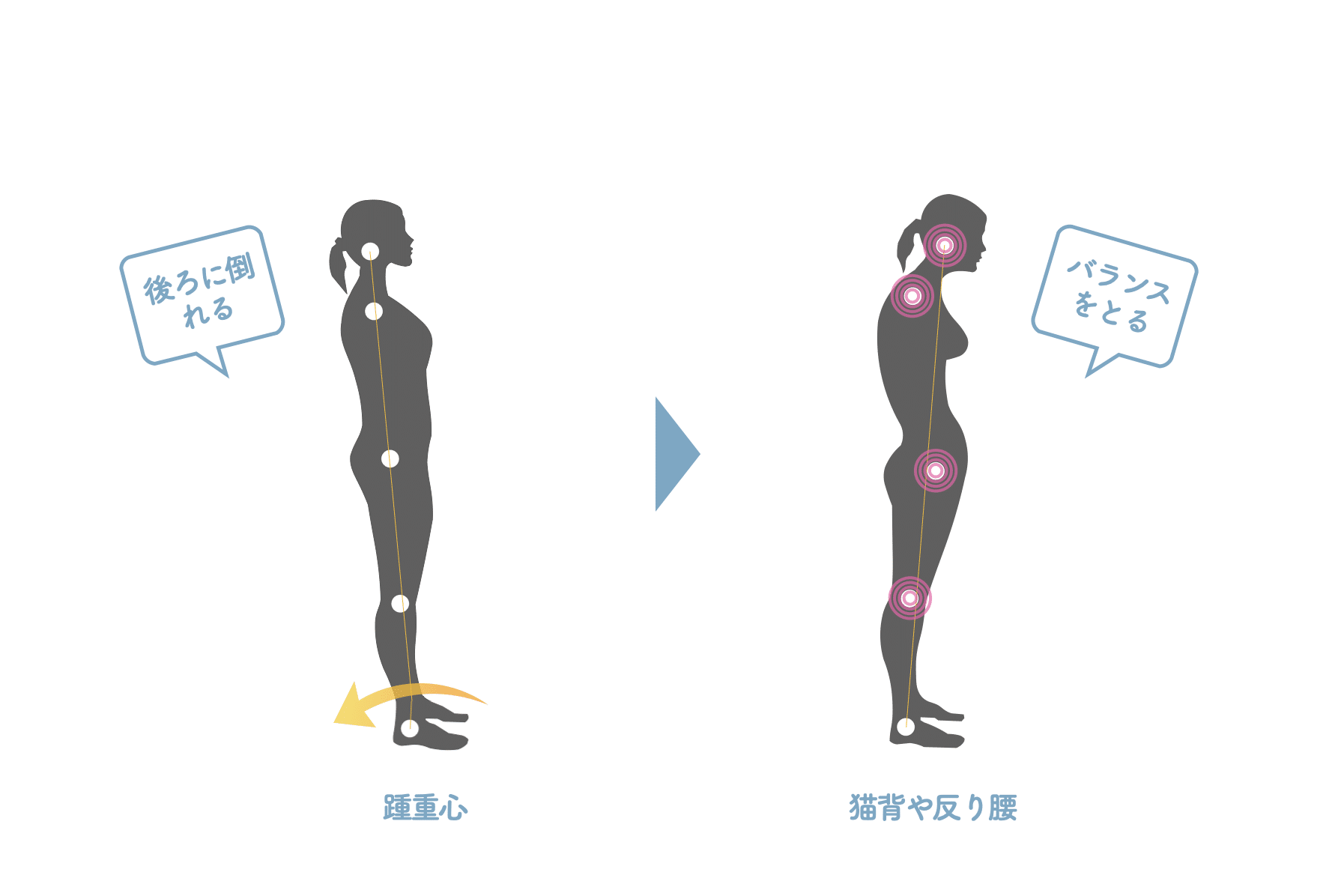
Also, because the center of gravity shifts backward overall,Bent toes → heel center of gravity → backward/forward pelvic tilt (pelvic deformity) → hunchback/warped back (spine deformity) → rolled/warped shoulders→directional marker or indicatorStraight neck (deformation of neck bones) → mouth breathing / low tongue (breathing problems) → misaligned jaw joints / bite and teethand this process leads to a variety of discomforts (see symptom-specific articles for more information).
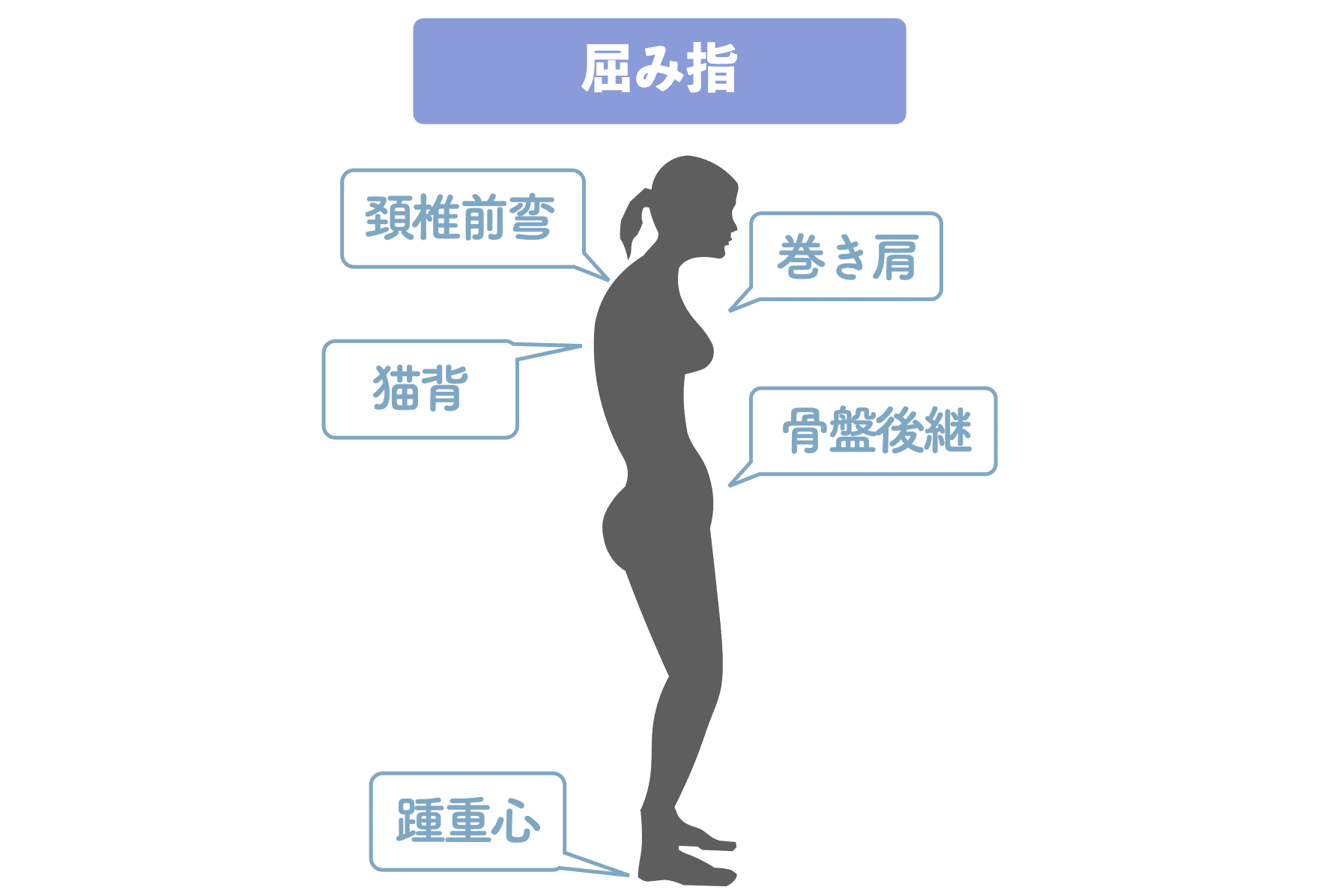
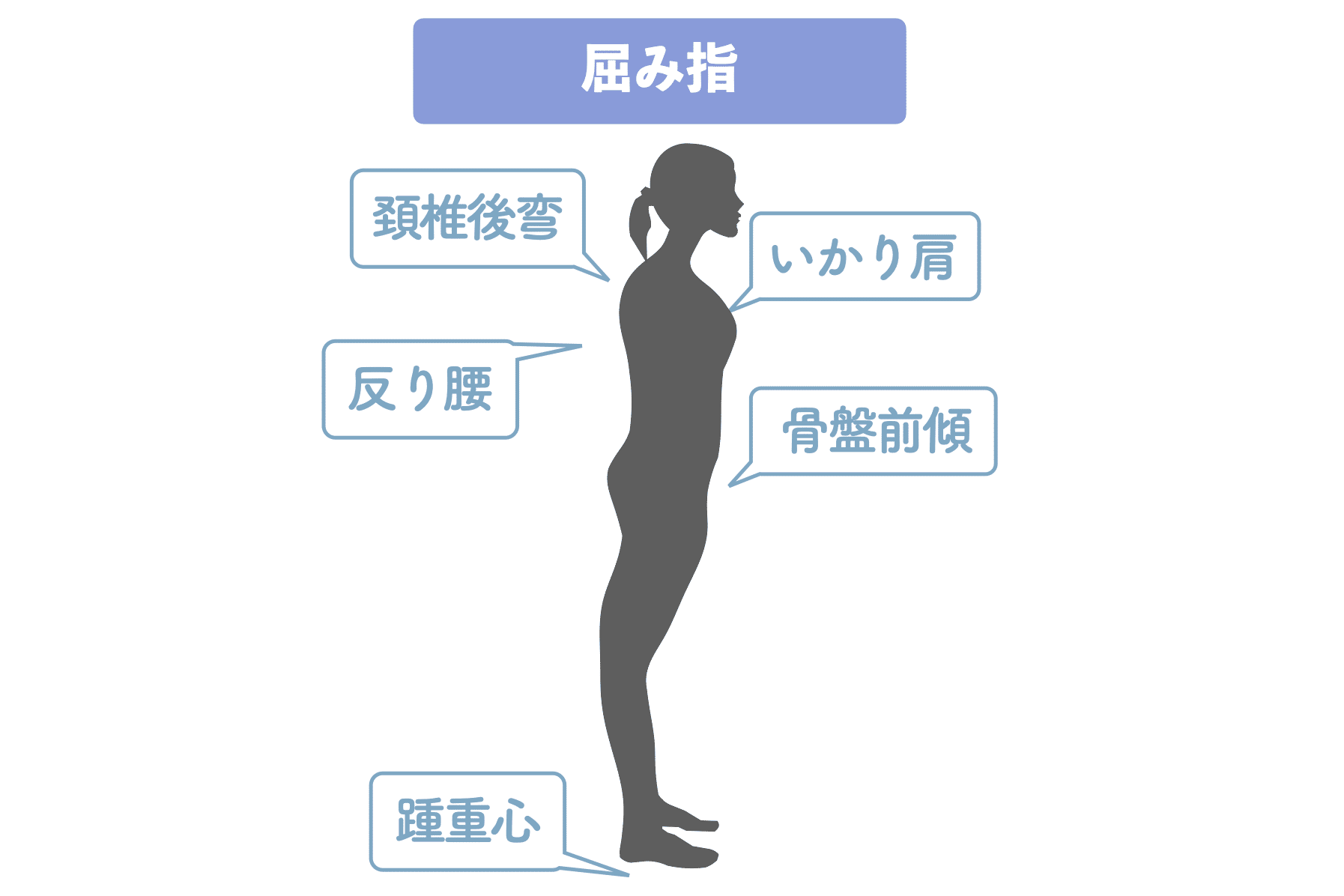
Bending fingers → numbness of fingertips, falls, pinching, cold, ingrown toenails, Morton's disease
Heel center of gravity → Achilles tendon rupture, swollen feet, cramps in the calves
Anterior/posterior pelvic tilt → swelling, cold, menstrual irregularity, infertility, sciatic nerve pain
Distortion of the spine → hernia, stenosis, scoliosis, lumbago, back pain
Curly shoulder/ankle shoulder → stiff shoulder, frozen shoulder, rotator cuff tear, etc.
Deformation of neck bones → cervical herniation, stiff neck, mouth breathing, low tongue, sleep apnea syndrome
Distortion of facial muscles → TMJ disorder, bite and teeth misalignment
Properly restoring the shape of the floating toe is necessary to keep the entire body straight, not just the feet!It is.
Check out the video to see the correct view of the floating finger (ukiyubi)!
Specialized evaluation and diagnosis of floating toes (ukiyofuji)
Unfortunately, there is nothing to diagnose a "floating toe" in a hospital setting. This is because the disease cannot be given a name like hallux valgus or hammertoe (flexed toe). Some test for "floating toe" with a plantar pressure measuring device as part of the examination for Parkinson's disease or cerebellar ataxia. Hospitals do not test for floating toes themselves, so there is no treatment itself.
Diagnosis of floating toe (foot scan)
There is no diagnosis for a floating toe, although it can be determined by appearance. As mentioned above, a foot examination is performed in certain diseases, but it can also be determined by plantar pressure measurement.Most of the time they are not taken seriously at the hospital.Think of it as.
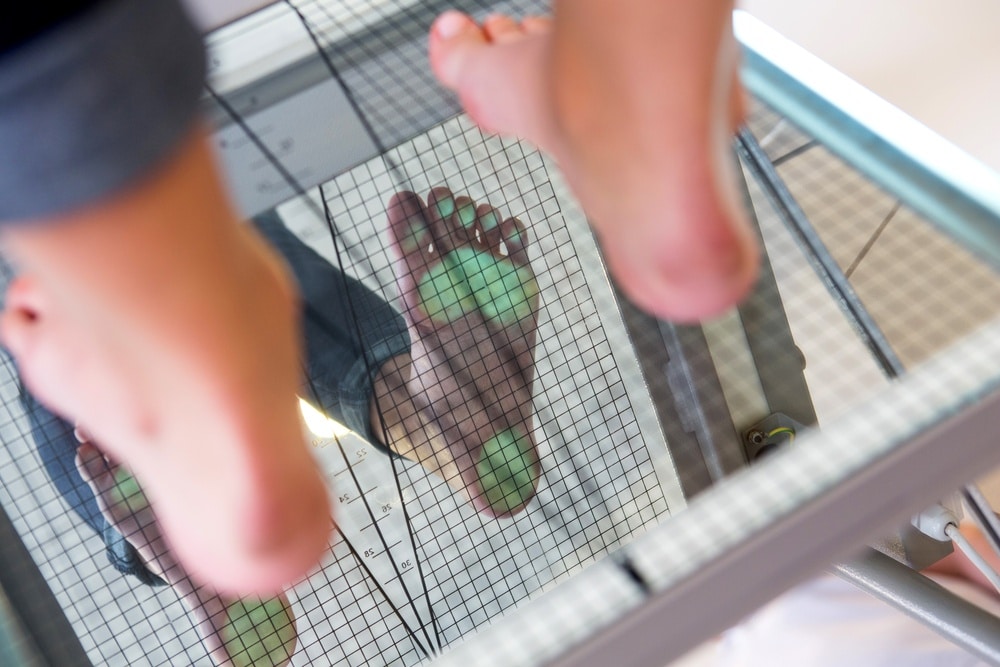
I used to use a plantar pressure measuring device (FootScan) for about 5 years, but now I can tell by looking at my feet, so I do not use it. I think self check is sufficient except for those who do outpatient foot care professionally.


While checking the degree of improvement of "floating toes" with a plantar pressure measuring device as described above, it may also be useful to monitor the condition of the feet and posture, and to give advice to customers. The way of looking at the plantar pressure measuring device is also very deep, so I would like to introduce this in another article.
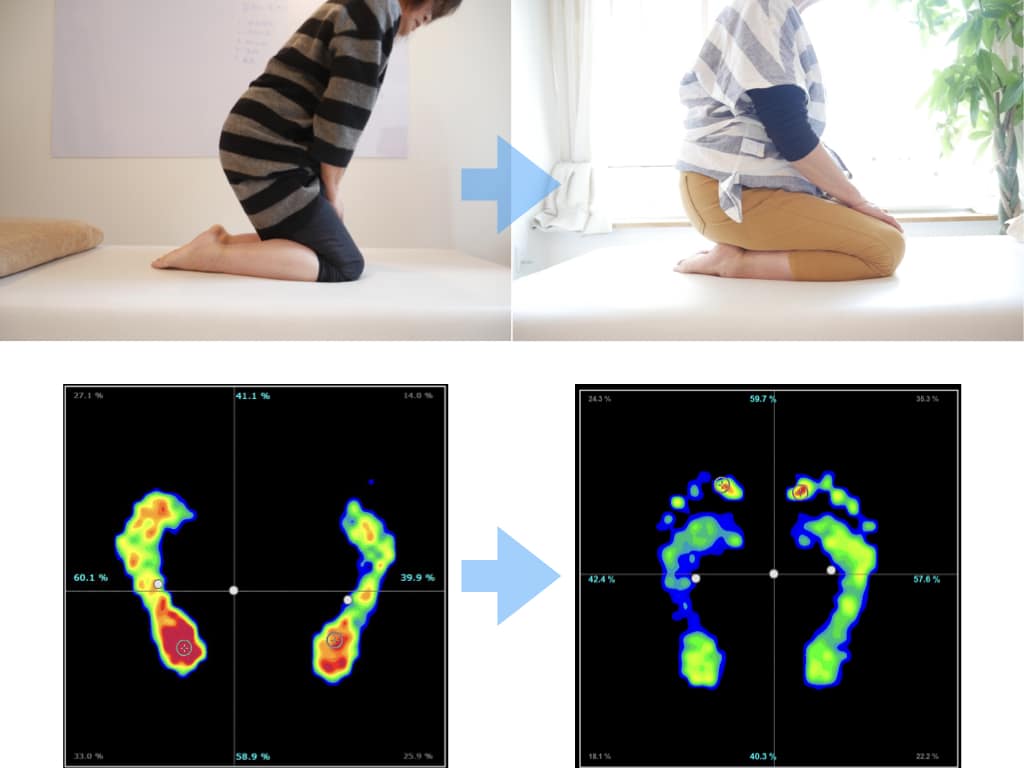
Some, like this person, have improved their floating toes, eliminated knee pain, and are able to sit upright. However,Improvement of "floating toes" with a plantar pressure measuring device does not mean that knee pain will improve!The following is a list of the most common problems with the
One of the indicators is that the toes are easier to touch the ground in static posture, and from there it is important to determine how to use the toes in dynamic posture. Although the number of hospitals, osteopathic clinics, and physical therapy clinics specializing in toes has increased nationwide, they have not been able to improve knee and back symptoms.
This is partly because we see only the toes and advise only on the toes. This part of the article will also be in depth and will be presented in another article.
Diagnosis of floating toe (footprint)
In addition, there is a footprint made by Bauerfeind, which is inexpensive (about 30,000 to 50,000 yen) and can determine floating toes. This may be sufficient for outpatient foot care at hospitals, osteopathic clinics, and osteopathic hospitals. If you want to statistically summarize detailed numerical fluctuations for research purposes, I think the "FootScan" is a good choice. I used this in my clinical practice for about 6 years.
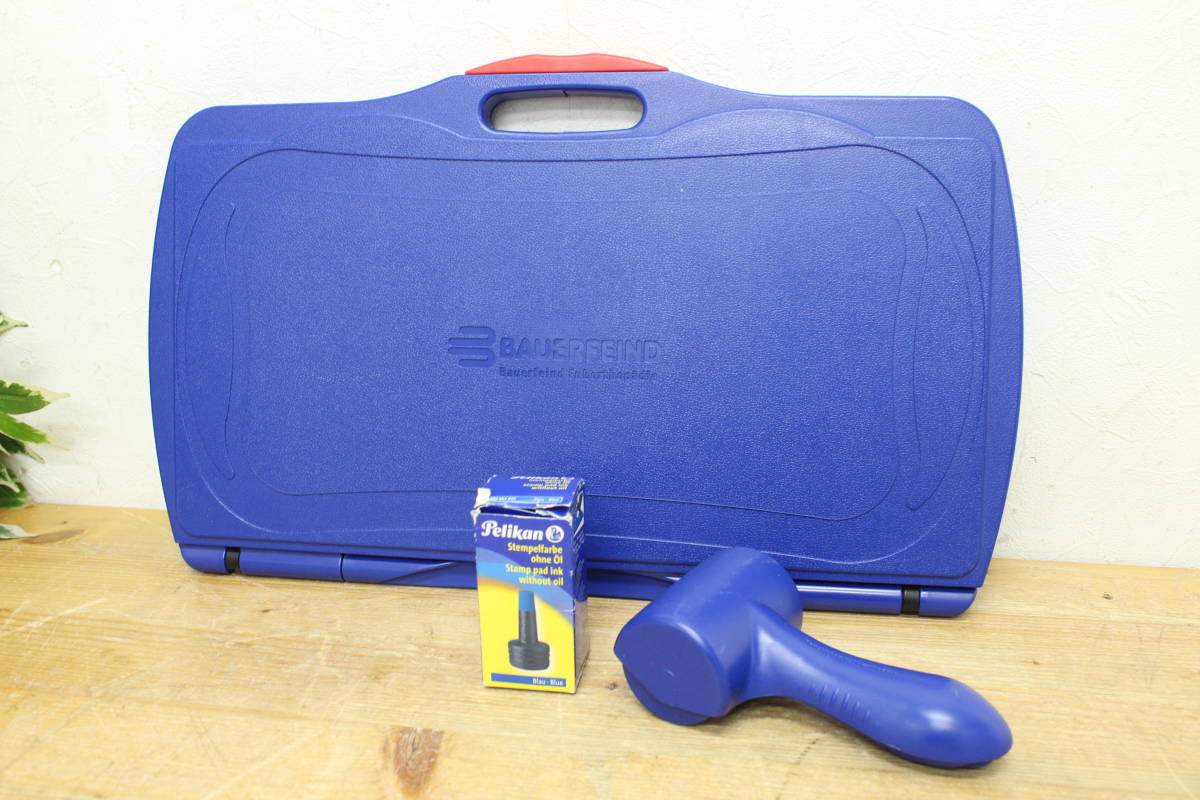
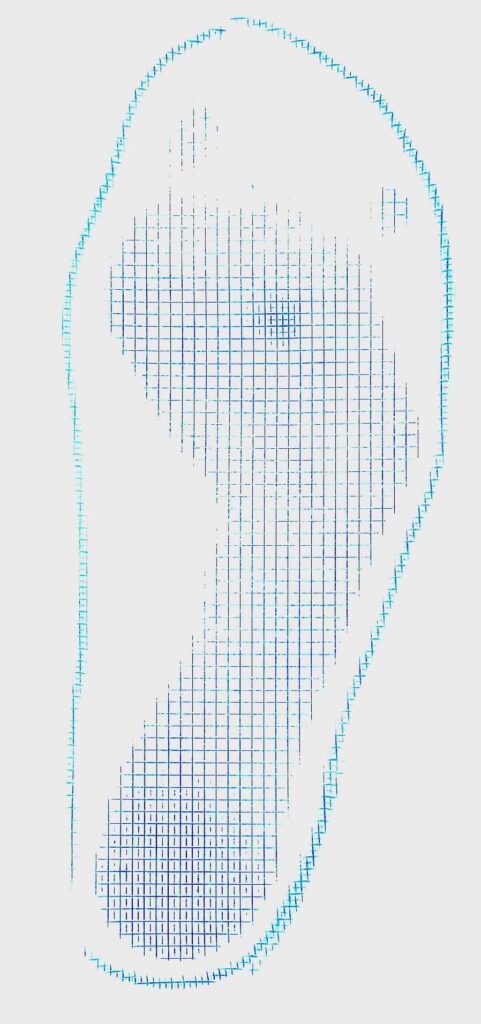
How to heal a floating finger
Here we would like to explain how you can solve the problem yourself, with general diagnosis, treatment, and causes. Please refer to the following sites
